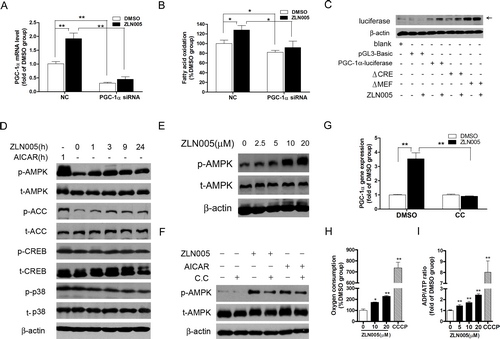
Peroxisome proliferator-activated receptor-γ coactivator-1α (PGC-1α) has been shown to influence energy metabolism. Hence, Researchers explored a strategy to target PGC-1α expression to treat metabolic syndromes.
Researchers of National Center for Drug Screening in Shanghai Institute of Materia Medica, Chinese Academy of Sciences (SIMM) developed a high-throughput screening (HTS) assay that utilizes the human PGC-1α promoter to drive luciferase expression. The effects of stimulation on PGC-1α expression in muscle cells and hepatocytes were investigated in vitro and in vivo.
A novel small-molecule, ZLN005, led to changes in PGC-1α mRNA levels, glucose uptake and fatty acid oxidation in L6 myotubes. AMPK activation was involved in the induction of PGC-1α expression. In diabetic db/db mice, chronic administration of ZLN005 increased PGC-1α and downstream gene transcription in skeletal muscle, while hepatic PGC-1α and gluconeogenesis genes were reduced. ZLN005 increased fat oxidation and improved glucose tolerance, pyruvate tolerance and insulin sensitivity of diabetic db/db mice. Hyperglycemia and dyslipidemia were also ameliorated after ZLN005 treatment.
This work demonstrated that small molecule targeting PGC-1α transcriptional regulation in skeletal muscle could promote mitochondria biogenesis to exert promising therapeutic effects on metabolic syndrome.
This work has been online published in Diabetes on December 18, 2012. The research work was mainly done and finished by Dr. ZHANG Lina, upon supervision by Professor LI Jingya, and directed by Professor LI Jia and Professor SHEN Jingkang of SIMM.

AMPK is involved in the mechanism of PGC-1αinduction in L6 myotubes. (Image by SIMM)

86-10-68597521 (day)
86-10-68597289 (night)

86-10-68511095 (day)
86-10-68512458 (night)

cas_en@cas.cn

52 Sanlihe Rd., Xicheng District,
Beijing, China (100864)

